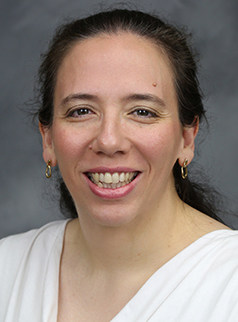By Heather Jennings, PE

The products involved are Bio Energizer® (BE)—a scientific formulation of organic acids, buffers, natural biological stimulants, micronutrients, and energy systems—and Micatrol® (MT), a specialized product that uses organic acid as a substrate to buffer wastewater microbial life. Both BE and MT are complexed with our proprietary Micro Carbon Technology® (MCT) to deliver readily bioavailable nutrients to microorganisms.
The capacity of the biological treatment system was 30,000 m3/d. BE and MT were added into the return activated sludge (RAS) of the wastewater treatment system at a dosage of 1 ppm for a duration of 30 days via a chemical dosing pump. The system consists of a primary sedimentation tank and aeration basins, followed by secondary clarification. Samples were collected at the outlets of the primary sedimentation tank and the secondary clarifier The duration of BE and MT application was 30 days. These results were compared with 30 days of pre-application and 29 days of post-application.
MLSS Comparison
During the use of BE and MT, MLSS tended to be more stable and higher than the average of the previous 30 days, indicating a healthier biomass. It is noted that during this period, MLSS sharply decreased once owing to a one-day high-COD-loading event. BE and MT enhanced the activity and growth rate of the biomass when the system was impacted.
SV30 Comparison
The activated-sludge treatment system process can be susceptible to sludge bulking caused by filamentous microorganisms that leads to poor settling. SV30 is a standard method of analyzing sludge settleability: the lower the SV30 percentage, the better the settleability. When wastewater system operations are unstable or impacted, SV30 fluctuates. Previously, this system operated unstably and SV30 could be as high as 99%—concurrent with sludge bulking. During the dosing period SV30 decreased gradually, and at the end of application the SV30 stabilized at under 75%.
Microbial Review
The microscopy results before dosing showed that the zoogloea was loose, with smaller pin floc, a large amount of filamentous bacteria, and very little flagellate-protozoans in the aeration basin. This indicates that excessive loading was occurring and new bacteria couldn’t grow or be supplied in time. After one week of dosing with BE and MT, very small quantities of Vorticellidae (Vorticella-stalked ciliates, various species) were found in the system, indicating that the system was beginning to recover. One month post-application, floc formation improved, with larger quantities of Vorticellidae along with smaller quantities of rotifers and various other types of protozoans and metazoans. This is an indication that the system had totally recovered, leading to improved treatment efficiency and operational stability
CONCLUSIONS
Providing necessary biostimulants and buffers to the microbial system can significantly improve system upset recovery ability and overall operational stability. The combined dosing program of Bio Energizer® and Micatrol® significantly improves systems’ ability to recover after an “upset” condition, such as when systems experience instantaneous high COD or hydraulic loading or experience high-toxicity events. The microbiology recovers quicker than is typical—leading to improved COD removal and settling, which improves water clarity and quality. Dosing Bio Energizer® and Micatrol® improves, buffers, diversifies, and strengthens the microbiology in the system—allowing the biochemical system to accommodate the “events” and maintain treatment efficiency.
To read/download the complete study report, click here (English) or here (Spanish).
Related Posts

This Week in Ag #4
Wednesday was Tax Day. For farmers, it was. Unlike the rest of us, farmers (and fishermen) file taxes on March 1. Due to the complexities of farming, including depreciation schedules for machinery, most farmers hire a professional tax preparer to help file their Schedule F. These are often independent accountants. And most are long-standing, often...

Industrial Wastewater Treatment for Corn Processing Plant
Plant Manaer Geraldo O.: "It's the silver bullet we've been looking for all along." Plant Operator Steve W.: "We tried everything to solve the (odor) problem....We've been tickled to death with the product." Plant Operator Ken R.: "It definitely works. Bio Energizer allows us to function more efficiently."

Humic Acid Biostimulant Research by BHN Humic R&D Lab Scientists Published in Int’l Agronomic Journal
In its May 2021 issue, Frontiers in Plant Science published a research article by BHN Humic R&D Lab scientists Dr. Hiarhi Monda, Ryan Fountain, and Dr. Richard T. Lamar in collaboration with Dr. Amy McKenna of the National High Magnetic Field Laboratory, Ion Cyclotron Resonance Facility, Tallahassee, Fla. The research, titled “Bioactivity of Humic Acids...

